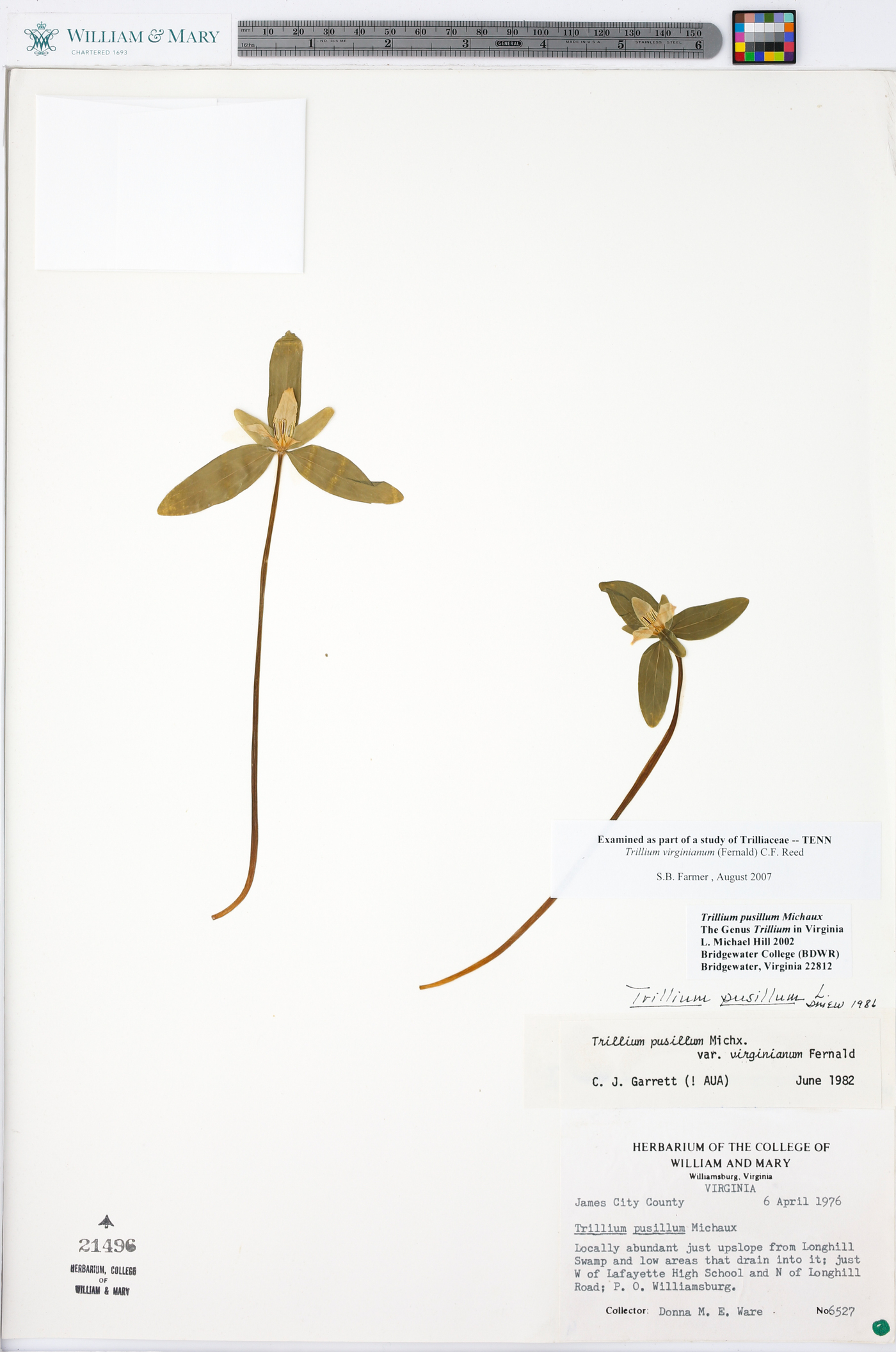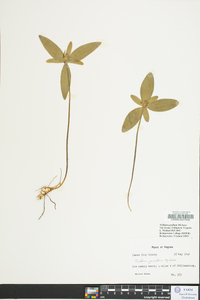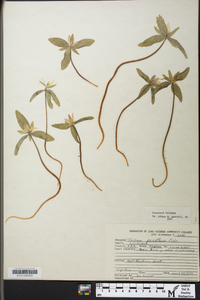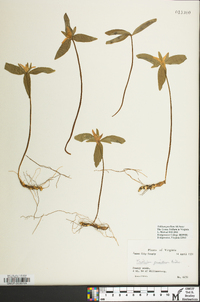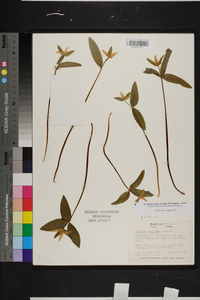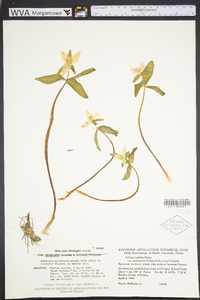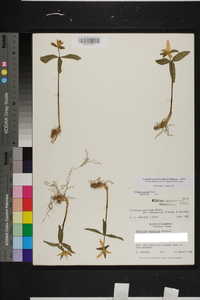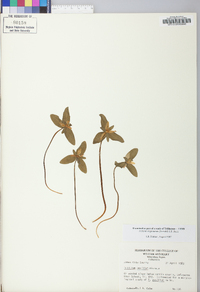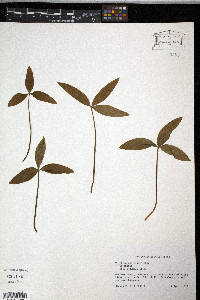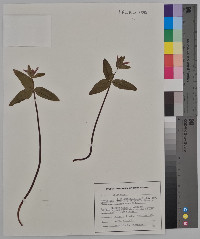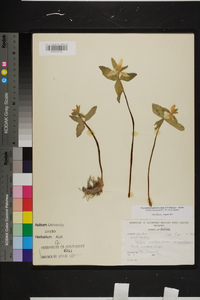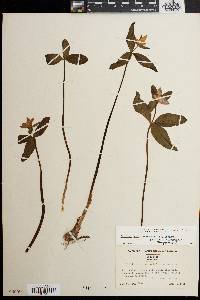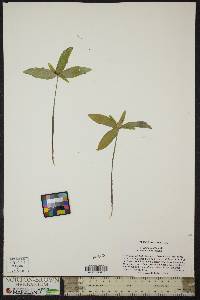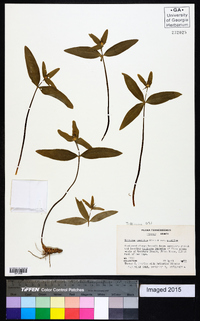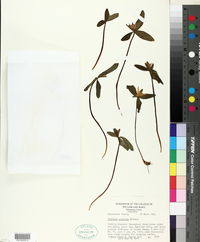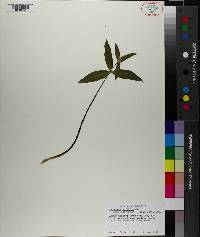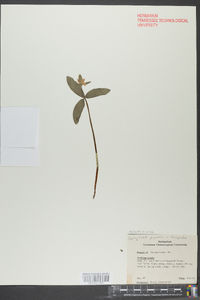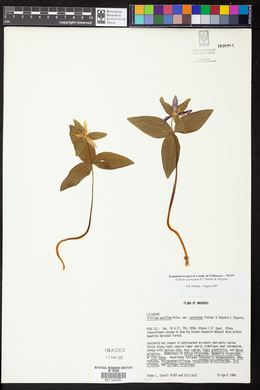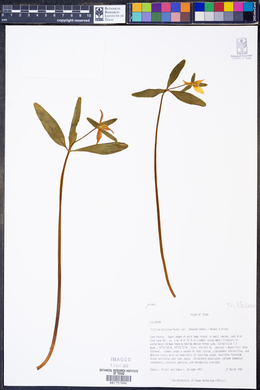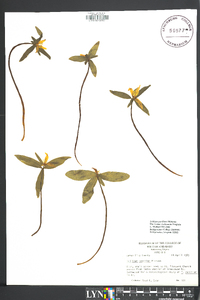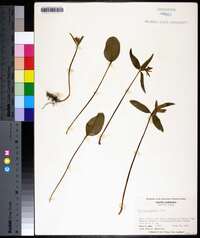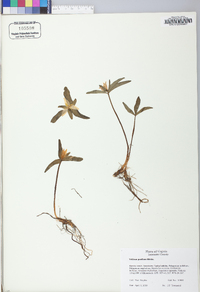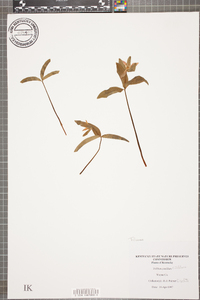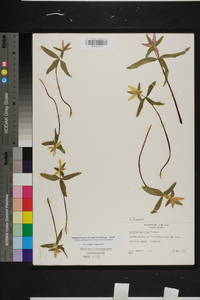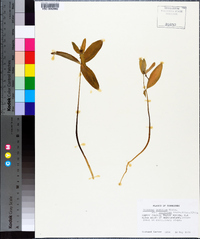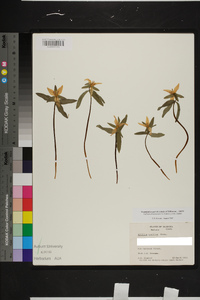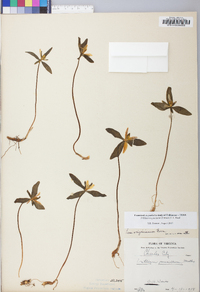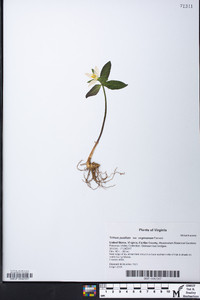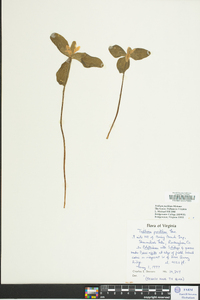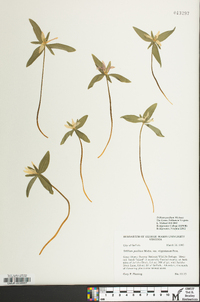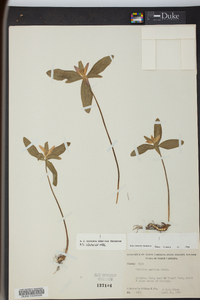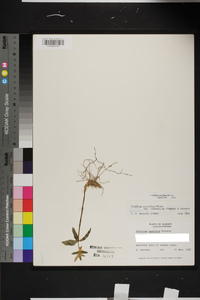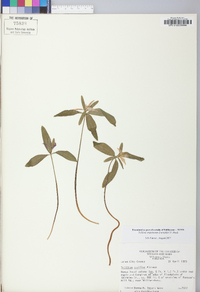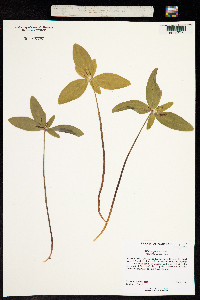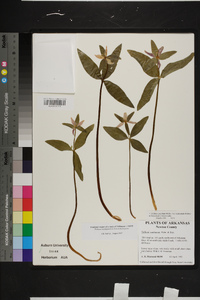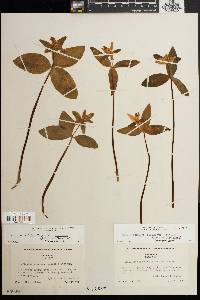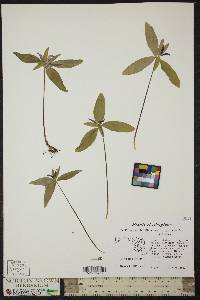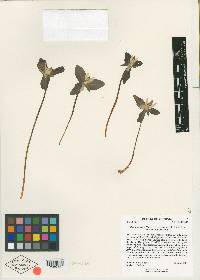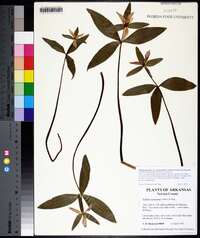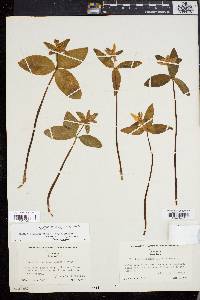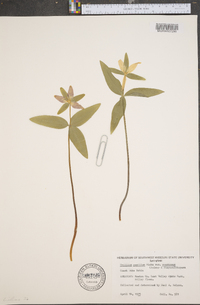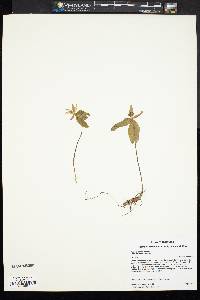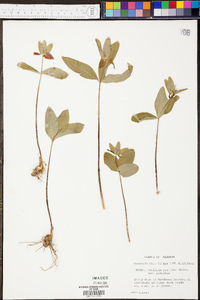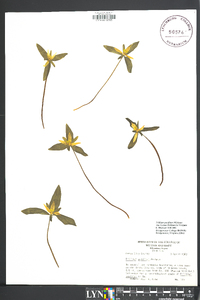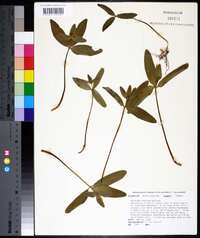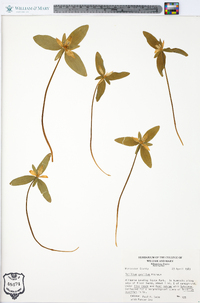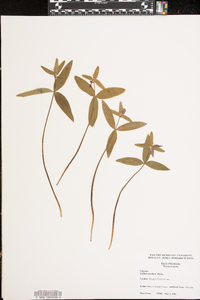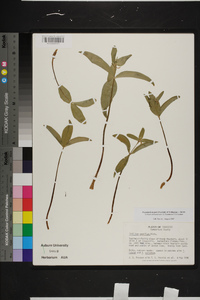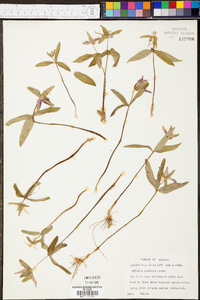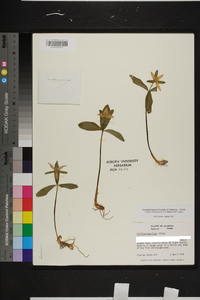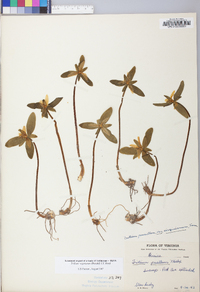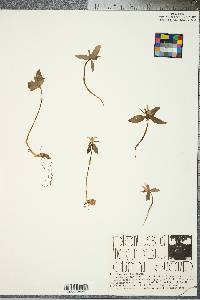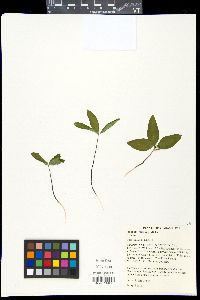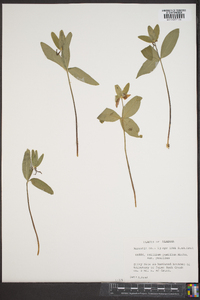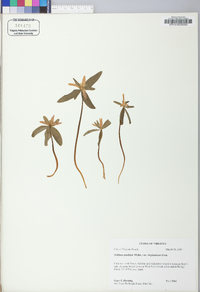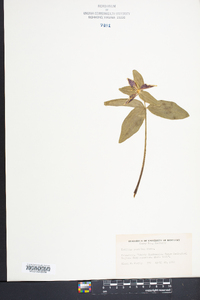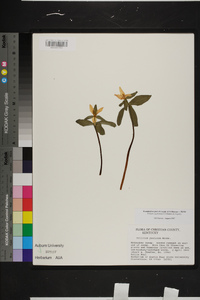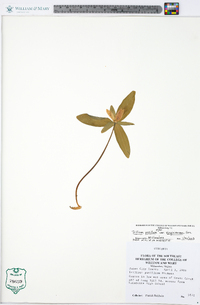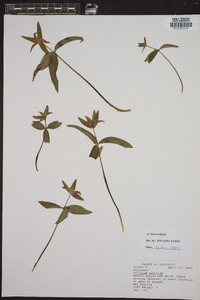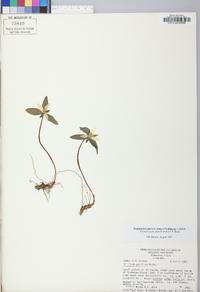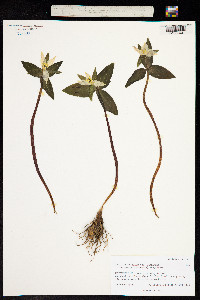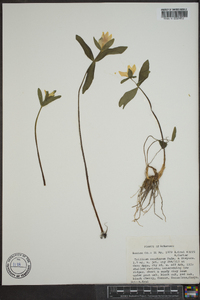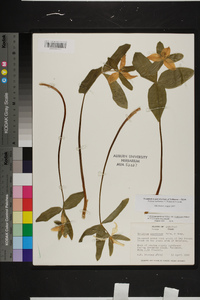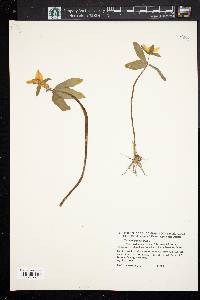
|
|
|
|
Family: Melanthiaceae
Dwarf Trillium, more...dwarf wakerobin
|
Rhizomes horizontal, branching, thin. Scapes 1-2, round in cross section, 0.7-2 dm, slender, becoming taller and more robust after flowering, glabrous. Bracts very short-petiolate, subsessile or sessile; blade dark green with maroon undertones when young, not mottled, 3-5 major veins from base, oblong to lanceolate-obtuse, 2.5-8+ × 1-3 cm, not glossy, apex obtuse. Flower above bracts, erect, odorless to faintly sweet, pedicellate or sessile; sepals conspicuous, spreading to same plane as petals, dark green with maroon undertones when young, oblong-lanceolate, 15-30 × 5-10 mm, margins entire, apex obtuse to strongly rounded; petals of short duration, spreading-ascending, exposing stamens and ovary, weakly recurved in distal 1/2, white, aging to deep rosy pink abaxially, veins not engraved but major petal veins clearly visible, oblong to narrowly lanceolate, 1.5-3 × 0.5-1.5 cm, thin-textured, widest above base, margins strongly undulate, quite variable in petal width and degree of undulation between individuals and populations, apex obtuse to weakly acute; stamens erect-spreading, 8-10 mm; filaments pinkish purple to white, ± equaling or slightly shorter than anthers, slender; anthers ± straight, pale lavender or yellow, 3-8(-10) mm, thicker than filaments, dehiscence introrse; connectives not extended beyond anther sacs; ovary conspicuous, white, ovoid, obscurely 6-angled, 2.5-8 mm, attachment narrower than ovary; stigmas confluent with style, greenish white to white, distally 3-lobed, lobes linear (threadlike), long-spreading, 3-12 mm, uniformly thin and threadlike; pedicel stiffly erect to leaning, 0.5-2 cm, or absent to much reduced. Fruits white or pale greenish, ovate, 1-1.5 cm, pulpy, moist but not juicy. 2n = 10. Trillium pusillum comprises widely disjunct, regional populations, each varying somewhat from the others and variable within itself as well. Some of these populations have been named as varieties or separate species. In the wild, the plants that have been recognized as var. ozarkanum generally grow taller than others and are said to have bracts with five major veins instead of three. Plants attributed to var. texanum, on the other hand, are generally smaller in all parts, with narrower petals, and often revert to a single bract when not flowering. Only var. virginianum is easily distinguished at sight by its 'sessile' flower. This variety has received extensive study. P. R. Cabe (1995), in a morphological study including statistical analysis, found variation within and between populations. He felt that his results were inconclusive, and also that some of the variation might be environmentally induced. The variation that he found did not correlate with a geographic pattern, and he suggested treating all Virginia populations as var. virginianum, or simply T. pusillum. In a later study, P. R. Cabe and C. R. Werth (1995), using isozyme evidence, obtained like results, and suggested treating all Virginia populations as a single variety pending further investigation. Until there has been such study, of the Virginia plants as well as the rest of the T. pusillum complex, I choose to retain the fairly distinctive and more or less traditionally known var. virginianum, and include all other populations in a broadly circumscribed var. pusillum.
Slender, 1-3 dm; rhizomes up to 1 cm thick; lvs lance-elliptic or lance-ovate, sessile, at anthesis 2.5-6 cm, acute or subobtuse, about equaling or surpassing the pet; pet white, aging to pink or rose-purple, undulate, 1.5-3 cm, ovate or lance-ovate; filaments broadened at base, up to about as long as the linear anthers; style straight, erect, 2 mm, or nearly obsolete; stigmas recurved; ovary obtusely trigonous, flask-shaped, as also the fr; 2n=10. Several slightly differing, ±disjunct populations have been segregated as vars. on doubtfully sufficient grounds. Plants from coastal N.C. and S.C. are var. pusillum; those of coastal Va. and Md. are var. virginianum Fernald; those of montane Va. and adj. W.Va. are var. monticola Bodkin & Reveal; those of c. Ky. to n. Ala. and sw. Tenn., and of the Ozark region of s. Mo. and Ark., avg larger than the others, are var. ozarkanum (E. J. Palmer
& Steyerm.) Steyerm. (T. o.) Gleason, Henry A. & Cronquist, Arthur J. 1991. Manual of vascular plants of northeastern United States and adjacent Canada. lxxv + 910 pp. ©The New York Botanical Garden. All rights reserved. Used by permission. |
This project was made possible in part by the Institute of Museum and Library Services [MG-70-19-0057-19].
Powered by Symbiota

